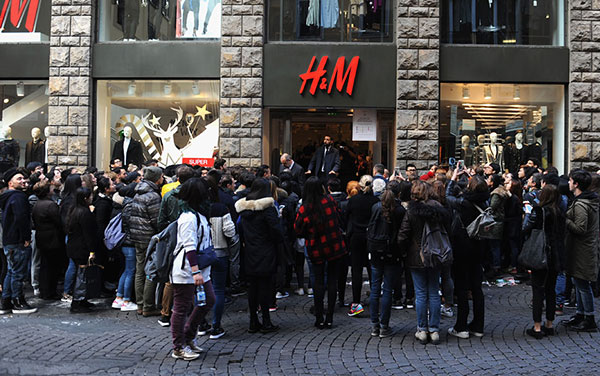Affordable fashion brands get it on in Vietnam
More and more affordable international fashion brands enter Vietnam, heating up competition and bringing more choices for Vietnamese customers.

Competition heating up
In early February, H&M Vietnam has announced opening its first store in Hanoi. According to Inside Retail Asia, the Swedish brand has already begun recruiting staff.
The recruitment advertisement revealed that the store has an area of 2,000 square metres and will need about 100 employees who will be trained abroad for three to five months before officially starting in Vietnam.
H&M also scheduled to recruit in Ho Chi Minh City for its second showroom, which will be located in Vincom Thao Dien (District 2).
H&M’s upcoming arrival was predictable, as they have been preceded by most brands of the same tier.
Of its international rivals, Mango has been in Vietnam for the longest time. It opened its first store in Ho Chi Minh City in 2004. In 2015, Mango Mega Store chain with international standards appeared.
Each Mango store has an area of at least 1,000 square metres, including three major product lines: Mango Women, Mango Men, and Mango Kids. Currently, there are eleven Mango stores in Vietnam, including four Mango Mega Stores in Ha Noi and Ho Chi Minh City.
Affordable UK fashion brand Topshop joined the Vietnamese market in 2013. Topshop-Topman is a street-style fashion brand for youngsters. The first Topshop-Topman showroom was opened in Bitexco Financial Tower (Ho Chi Minh City). Topshop’s second store was opened in Hanoi, and at the present, there are altogether four Topshop-Topman stores in Hanoi and Ho Chi Minh City.
Half a year ago, in September 2016, fast fashion brand Zara opened its first store in Vietnam with an area of over 2,400 square metres in Vincom Dong Khoi (Ho Chi Minh City). Zara reported a revenue of VND5.5 billion ($241,000) on the first day opening.
As living standards in urban areas are improving, so is the demand for clothing picking up. Additionally, young people are quick to catch up to the newest international trends, which may mean good prospect for the brands.
However, the appearance of more brands means more competition. There is one certain thing though: Vietnamese customers will benefit from this battle, and as these brands widen their product range in the country, they will replace single or small intermediaries who import their products from abroad.
From affordable to luxury
Some domestic fashion brands may worry about being dominated by these famous brands as youngsters in Vietnam may prefer foreign labels to catch up with the latest trends in the world. However, the price is still a barrier for these famous brands when approaching Vietnamese customers.
Affordable prices have always been the pride of H&M, Zara, Mango or Topshop, as they offer more than reasonable prices in more developed countries. In Vietnam, many items have to be sold cheaper compared to some other countries. For example, some of Zara’s skirts in Vietnam may be VND100,000-200,000 ($4.5-$9) cheaper than in Thailand.
Nevertheless, prices are still high. When entering Vietnam, somehow these affordable brands have turned into luxury fashion labels. The middle class segment—the target customers of these brands in every country—has a lower income in Vietnam, and there are already numerous established clothing stores and brands with various styles at much more reasonable price in this segment.
For instance, in Daisy shops, a well-known chain of clothing stores for young women, the most expensive items are the overcoats which are priced at VND1.3 million ($56), while similar articles in Zara or Mango go for VND2-3 million ($87-$131).
Besides, these foreign brands are confronted with counterfeit Chinese products. As Vietnam has been repeatedly called to strengthen copyright protection, the design of numerous brands may be copied and sold at a lower price. Looking through these duplications, it is difficult to recognize that they are fakes. This remarkably influences sales and the reputation of the genuine products.
It would be great news for Vietnamese customers if following in H&M’s steps more and more affordable fashion brands, such as Forever 21, would join the Vietnamese market. However, these brands still have significant barriers to overcome in order to make their way here./.
VNF/VIR
